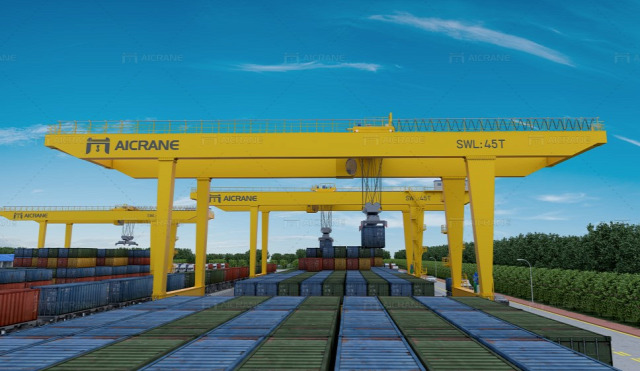In the realm of logistics and container handling, constant innovation is key to staying ahead of the game. As industries evolve and global trade continues to expand, the demand for more efficient, safer, and smarter solutions is ever-present. One area that holds tremendous promise for the future is the development of Rubber Tired Gantry (RMG) crane technology. With ongoing advancements and groundbreaking innovations, the future of RMG cranes looks brighter than ever.

Automation and Robotics:
Automation has already made its mark in the logistics industry, and RMG cranes are no exception. Future developments will see the integration of advanced robotics and automation technologies into RMGs, making them more intelligent and self-sufficient. These cranes will be equipped with computer vision systems and machine learning algorithms to recognize and handle containers with minimal human intervention. The integration of robotics will enhance operational efficiency, reduce human errors, and optimize container movements, leading to significant time and cost savings.
Internet of Things (IoT) Connectivity:
The Internet of Things (IoT) has the potential to revolutionize the way RMG cranes operate. By connecting various components of the crane, including sensors, controllers, and communication systems, cranes can gather real-time data on their performance, maintenance requirements, and environmental conditions. This data can be analyzed to optimize operations, detect maintenance issues proactively, and enhance overall productivity. Additionally, IoT connectivity enables seamless integration with other logistics systems, such as warehouse management systems and transportation networks, creating a more interconnected and efficient supply chain ecosystem.
Advanced Energy Management:
Sustainability and energy efficiency are at the forefront of future developments in RMG crane technology. The industry is witnessing a shift toward greener solutions, and RMG cranes are following suit. Advancements in energy storage, regenerative braking systems, and hybrid power sources will reduce the environmental impact of these cranes. By harnessing renewable energy sources, such as solar or wind, RMG cranes can significantly decrease their carbon footprint while still maintaining high operational performance. These energy-efficient solutions not only benefit the environment but also help companies meet their sustainability goals and reduce operating costs.
Artificial Intelligence and Predictive Analytics:
Artificial intelligence (AI) and predictive analytics are poised to revolutionize RMG crane operations. By leveraging AI algorithms and data analytics, cranes can optimize their movements, predict maintenance needs, and identify potential bottlenecks in the workflow. These technologies can learn from historical data and make intelligent decisions in real-time, leading to improved efficiency and reduced downtime. Predictive maintenance, enabled by AI and analytics, allows for proactive repairs and component replacements, minimizing unplanned outages and maximizing the lifespan of the crane.
Enhanced Safety Systems:
Safety is paramount in any logistics operation, and future RMG crane developments will prioritize advanced safety features. Cranes will incorporate sophisticated sensor systems, including lidar, radar, and cameras, to detect potential obstacles and hazards in real-time. These systems will provide operators with enhanced situational awareness, enabling them to make informed decisions and avoid accidents. Furthermore, augmented reality (AR) technology may be integrated into RMG cranes, providing operators with real-time overlays of critical information, such as load capacity and container positions, enhancing safety and precision.
Modular and Scalable Designs:
Future RMG cranes will embrace modular and scalable designs to accommodate evolving operational needs. These cranes will be adaptable to varying container sizes and stacking requirements, allowing for seamless expansion or reconfiguration of the container yard layout. Modular designs will also simplify maintenance and repair processes by enabling the replacement of individual components or modules without disrupting the entire crane system. This scalability ensures that RMG cranes can grow alongside the changing demands of the logistics industry, providing long-term value and flexibility.
In conclusion, the future of RMG crane technology holds immense potential for transforming the logistics and container handling industry. Automation, IoT connectivity, advanced energy management, AI and predictive analytics, enhanced safety systems, and modular designs are just a glimpse of what lies ahead. As these developments continue to unfold, RMG container cranes will become more efficient, sustainable, and intelligent, enabling businesses to achieve greater operational excellence and meet the ever-growing demands of the global supply chain. The future is undoubtedly bright for RMG cranes, paving the way for a smarter and more connected logistics industry.

